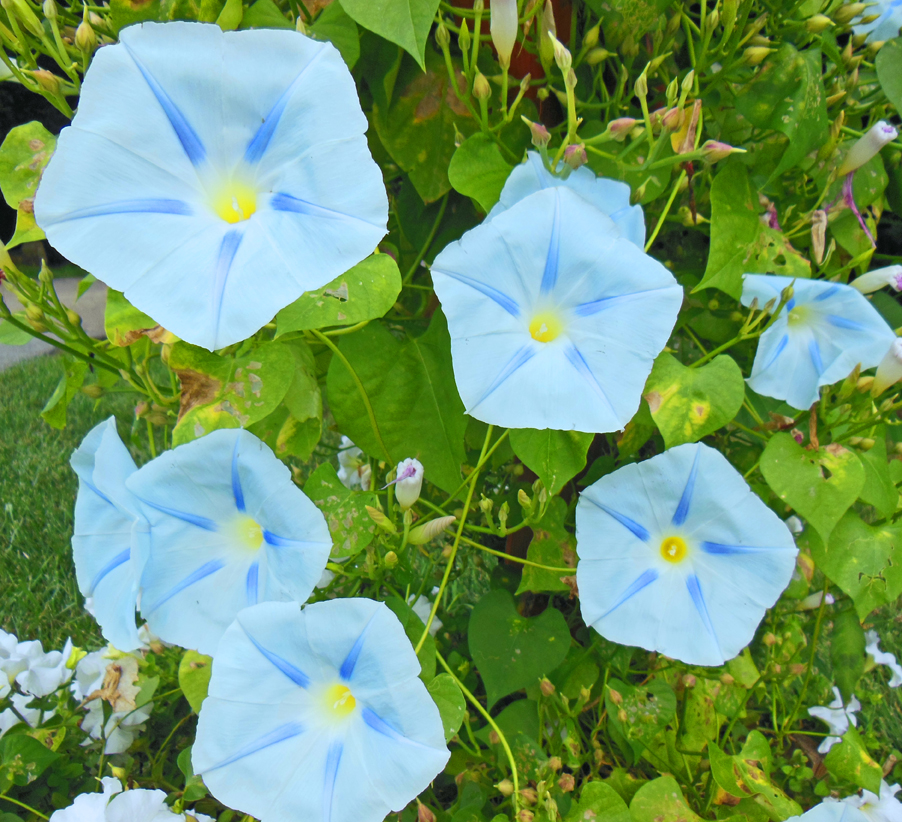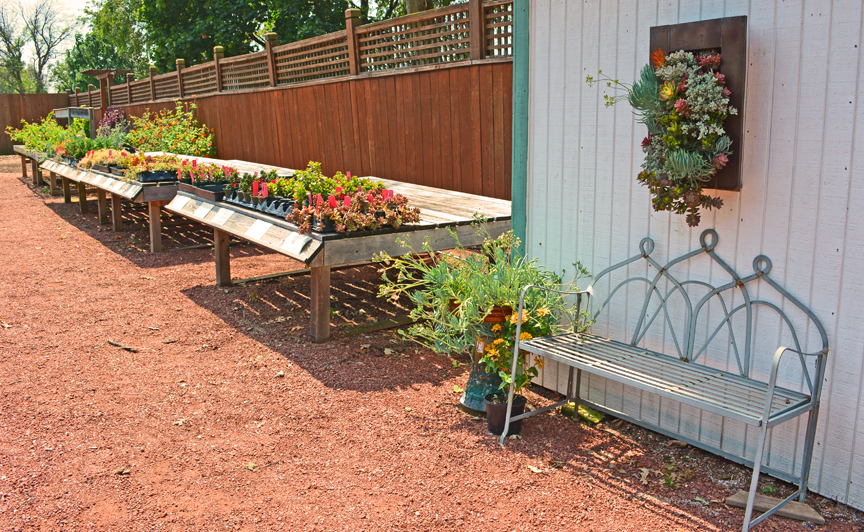Morning Glories (Ipomoea purpurea) in the Garden
Morning Glories are one of the easiest annual garden plants to grow from seed. They come in a wide assortment of flowers which can be beautiful on a mailbox, fence row, or garden arch. Now is the time to start thinking about ordering seeds and planning your special garden this year and morning glories are the perfect addition to bring a smile. Below is an excerpt from my book the Illinois Getting Started Garden Guide, that will give you help growing this happy flower filled vine.
- Morning Glory Botanical Name – Ipomoea purpurea
- Bloom Period and Seasonal Colors – Purple, white, pink, red, blue, and bi-color shades of flowers blooming throughout summer
- Mature Height x Spread – 5 to 40 feet X vining
- Botanical Pronunciation – ip-uh-MEE-uh pur-PUR-ee-uh
- Added Benefits – Native, Attracts Beneficials, Attracts Hummingbirds
- Sun Requirements – Sun, Part Sun, Part Shade
Morning glories are annual flowering vines that bring memories of my grandmother’s farm; she would plant them at the base of old fence posts and when I went out on my morning adventures through the countryside, their heart shaped leaves and smiling faces warmed my soul. Morning glories are known as reliable bloomers through most of the summer, thriving in heat, which is usually a time that many plants melt. Most morning glories bloom passionately in the early morning, closing their flowers by late afternoon. They come in bold colors including shades of true blue, which makes it a good design solution to climb on small structures. Morning glories are quite poisonous; be cautious when planting near the play areas of pets and small children.
When, Where, and How to Plant – Sensitive to ice and cold, morning glories should be planted by seed well after the last frost. File the seeds lightly to break the coating, and then soak the seeds for 24 hours. Plant the seeds ¼ inch below the surface in average, loamy soil. Planting in highly fertile soil can encourage leaf and discourage bloom. They prefer consistently moist soil that drains well. It is possible to start the seeds indoors about 6 weeks before the last frost, but they need to be placed in the ground without disturbing the roots. To do this, make your own pots from newspapers, planting the newspaper pots with seedlings directly into the soil.
Growing Tips – Plants flower more when placed in full sun locations without heavily wet soils. Let the soil dry out between watering. Prune any time to keep the plants tidy, or leave the plants to ramble if you have the space in the landscape. Morning glories will self seed and the 2-leaved babies can be seen popping up in the late summer and spring. To prevent this, pop the flowers off as they wilt on the vine. (Photo of Grandpa Otts Morning Glory credit Jung Seed).
Advice and Care – Vines planted in shadier conditions can suffer from fungal issues. Do not crowd the vines and water at the base of the plants for preventative maintenance. Treat fungal problems with an OMRI certified fungicide that contains the streptomyces lydicus bacteria. Do not fertilize.
Companion Planting and Design – Morning glories can be grown creatively so that they tumble out of containers. Most morning glories do not grow taller than 20 feet, so they tend to like smaller supports. Posts, low fences, and small structures all make delightful climbing locations. Consider mixing red, white, and true blue morning glories to create a 4th of July design.
Try These – ‘Grandpa Ott’s’ is an heirloom variety of morning glory which blooms a deep purple with a pink throat. ‘Scarlett O’Hara’ has bold red flowers. ‘Moonflower’ or ipomoea alba is a white flower that is known to open just as evening commences. ‘Flying saucer’ or ipomoea tricolor has striped flowers. If you would like more ideas on how to grow all types of plants, particularly in the Midwest, please pick up my book, the Illinois Getting Started Garden Guide online or at a book store and jump into natural gardening.




